
zero
-
Posts
6,041 -
Joined
-
Last visited
Content Type
Events
Profiles
Forums
Gallery
Posts posted by zero
-
-
2 minutes ago, Boondockit said:
Here is a pic of the 120 box,
A = Wire going straight down from box to hole in floor
B= An attached (twisted) wire leading to the big white wire (see very first pic in post at top
C= the exposed wire coming out of the big white wire that leads to nowhere (you can see this nowhere wire in very first pic at top of post
That white-sheathed cable is UF (underground feeder rated) and I assume 12 gauge? It is usually used for AC wiring. It can work fine for DC but the colors are wrong. With 120 volts AC wiring - black is "hot" and white is "neutral." In DC wiring black is NEG or ground, and red is POS or "hot." So it can confuse things. Also if it is 12 gauge - it is supposed to be protected with a 20 amp fuse or circuit breaker. If you found a 20 amp converter, using that wire would be fine. NOT fine if a 30 amp converter or larger. A 30 amp converter will call for 10 gauge wiring. A 50 amp converter will call for 8 gauge wiring.
-
1 hour ago, Boondockit said:
Ok, jdemaris, I can't tell you how much of a relief it was to get that, I especially like this:
"Back to your Schumacher 1.5 amp battery maintainer. That is an example of a modern fully electronic unit. If it was 30 amps instead of 1.5 amps - you'd be all set."
So, if I drop a 30 amp or higher modern converter charger EXACTLY in place of where that Schumacher 1.5 amp currently is it would work? (even though it would be feeding the 12v box first and not the battery first as others are commenting)...?
Hope to hear from you soon, thanks!!!!
As long as the wires between the never converter and the battery and DC panel are large enough, yes. It all depends on what size converter you buy and also what sort of battery charge capability is has.
-
1 hour ago, Maineah said:
I don't quite get how a battery can help make "clean" power when it disconnected from the inverter output during the charge cycle. In the case of a modern inverter it may have some effect.
I don't care if you "don't get it." I am just citing what is in the Basler owner's manual. Send them a letter and tell them you do not agree.
-
-
12 hours ago, Boondockit said:
"the converter.charger is always trying to get the battery up to 14 volts and then taper back. "
Thanks for your time and effort, I really appreciate it , this is where my pea brain explodes;
How, if and when I am plugged in to shore power, does it taper back and variate JUST the battery charging levels AND keep the lights going constantly when there is only one source out of the converter charger into the 12v box? How does it "split" and divide it's functions that way with only one output into 12v box?
i could easily understand if the converter charger just sent steady constant unvariating current to both house and battery but I can't understand how it can back off just the battery when it Is needed while keeping the flow going with coach lights etc
I am trying to avoid getting too complicated, but this can be a complicated subject. So just to be clear - lets stick to just the "converter." That is the device that takes 120 volts AC and turns it into 12-14 volts DC. Converters in themselves are not all the same. They can be put into two discrete categories.
The cheaper, older-tech converters like most of our RVs came with can NOT supply clean DC power without help from the "house" battery. They use that battery as a sort of power-cleaner and buffer and also to take up slack when more power is needed then the converter can make. E.g. the owner's manual for the converter in my 1978 Chinook clearly states that it cannot supply clean DC power unless hooked to a battery.
There are newer, higher-tech converters that can be used as stand-alone power-supplies with no battery if wanted. I have one in one of my rigs. It is an Iota DLS-45. These tend to be fully electronic and also silent (no buzzing like the old converters).
Back to your main question. As I said, a converter will attempt to make the DC system reach whatever voltage it is designed for. Often 13-14 volts. If it is only capable of making 15 amps and you are using 20 amps worth of appliances - then the "house" battery tacks up the short-fall and will eventually get discharged. NO battery charging can happen then. Once you stop using all the stuff and the converter is capable of 15 amps - and you are using - let's say 5 amps - then there are 10 amps left to charge the battery back up. Note that is a very simple and general description. Many converters have small added battery chargers and there are variations. So even though a converter is rated 15 amps - it might only have the ability to charge a battery at 8 amps. All depends on make and model.
Back to your Schumacher 1.5 amp battery maintainer. That is an example of a modern fully electronic unit. If it was 30 amps instead of 1.5 amps - you'd be all set.
-
A converter with battery charge capability can do the job when just running though two wires (one POS and one NEG). It has automatic voltage sensing, just like the alternator on the engine does. Lets say you have the converter plugged into shore-power and you are watching TV, have lights on, and a fan on (all running on 12 volts DC). That converter will simply supply all the power needed if it is big enough. If it is not, the battery takes up the slack. Regardless if you are using any DC power devices or not - the converter.charger is always trying to get the battery up to 14 volts and then taper back. Makes no difference if nothing is being used or lots of things are being used. In the case of a Minicruiser and many other RVs. converters were options. They did not all come with them. Not everyone camps where there is shore-power. My family never has and I have never turned on my converter since I've owned my 1988 Minicruiser.
That little Schumacher 1.5 amp battery maintainer works no different then a bigger converter/charger. It is just small. Too small to do much of anything since it is rated at a max of 1.5 amps. Small RVs often come with 15 amp converters and many have 30 or 50 amp converters. In fact, a 1.5 amp battery maintainer can barely maintain one "house" battery when it starts to get old. The older a battery gets, the more power it takes to keep it at a "maintenance voltage level." If you read the directions to that came with that little charger - it will say it is only rated for something like a 70 amp-hour battery (near half the size of a typical house battery).
People who camp a lot at places with AC power tend to want converters that are big enough to power anything DC that might get used. It is not uncommon to see 80 or 100 amp converters in some bigger RVs.
-
On 9/23/2016 at 11:36 AM, TDH4L said:
Hello everyone, I'm on the market for a 18ft Sunrader. I have a family of 4 and I think this is what is best for me. I was looking at Vanagon Westfalia at first but I think a Sunrader is better for my need. I saw a 18ft V6 model in good condition. I never purchase an RV before so any tips or advise would be great.
How much is the one you are looking at? Just curious. This one at a dealer in New Mexico looks pretty good - at least from here in Michigan.
-
-
-
I've seen lots of smaller Toyota RVs with no power-steering. I've never seen a 80s or 90s that is 20-21 feet long without it though. I'm not saying they are not out there. Just have not come across one myself. If I owned one - I'd spend $100 and add the power-steering. Not something I can do with a 1978 though. I wish I could. Note that the Chinook is small and I don't even notice manual steering when driving down a paved highway. I DO notice when barely moving and making sharp turns, three-point turns, etc. I also notice the lack of it on bumpy dirt roads since power-steering acts to stop road-shocks from travelling back to the steering wheel.
If anyone ever sees - anywhere on this planet - a 1978 or older Hilux truck what someone as adapted power-steering to - please post the info. I have never come across one yet. Adding a pump to the engine is easy. The problem is the odd-ball steering-box the old trucks use that was never made with power-capabilities.
-
On 9/20/2016 at 1:05 PM, Totem said:
that explains my relative ease then... no power steering on mine.
I've never seen a 80s cab & chassis truck with no power-steering before. Your's must be a oddity. I hate to admit it, but after years of driving 50s and 60s big trucks with " armstrong steering", I've come to really appreciate power-steering. I tried to find a way to put it into my 1978 Chinook but decided it is near impossible. For that reason alone, I would swap the Chinook coach onto a later or different mini-pickup. I've been very tempted to put it on my 1985 Isuzu 4WD diesel, but I suspect it would be so gutless it would be miserable to drive. That has a 2.2 liter diesel. It DOES have power-steering though.
-
Let me clarify. I am talking about the Denso alternator charging both your batteries when driving. Not what your on-board charger does that runs on shore-power IF you even have one.
My own opinion is a dual-output 10 amp marine-charger is the way to go. Mine is hardwired in. It charges all three of batteries whenever my Toyota RV is in storage. One cranking battery and two "house" batteries. When I got mine a few years ago, "Guest" was the brand-name. Since then, it has changed to Marinco. Here's what it looks like mounted under the couch in my 1988 Minicruiser.
-
46 minutes ago, jmowrey said:
Is this something you upgraded in your system? Should I assume my stock charging system in my 1985 Dolphin will not be adequate for AGM batteries?
Your stock Toyota charging system is fine. It makes no difference if a conventional flooded-lead-acid battery or an AGM. Auto alternators do NOT just charge at one setting. They try to maintain 14.2 volts and the charge-rate varies by the demand. Those 3 or 4 stage battery maintainers do the same except once the battery reaches 14.2 volts, they switch to a low "trickle-charge" voltage of around 13.8 volts. Since most RVs spend more time parked then driving - the alternator is fine when doing the driving part. When parked - a maintenance charger is what you need if you want your battery to last. All batteries "self-discharge." That means they go dead on their own, even if not hooked to anything. Thus the reason why a maintenance charger is needed for best battery life.
-
I had many Subaru Loyales. All 4WD wagons with hi-low transfer-cases and 1.8 liter engines. One of them had air-adjustable suspension. Great vehicles. I also had a couple of Imprezas with 2.2s up to 1995 that were also great. The problems came when Subaru enlarged the 2.2 to a 2.5. Seems to me that Subaru quality took a big dive in the 2000s. No more Boxer engines for me.
-
43 minutes ago, TDH4L said:
I don't really carry to much things and its mostly for weekend get away. I like the 18ft just because its easy to park on a standard parking space.
I traveled and camped many times with a Dodge pickup and a small slide-on Jayco pop-top on the back. Had less room then a 18 foot Sunrader and no bathroom. It was crowed at times but we did fine. We just took a trip in our 21 foot Minicruiser and had six people and a fat dog. Worked out fine. But no - all of us did NOT sleep in it. Might depend on just how big your kids are?
-
-
I went through all that work just for one winter of protection. The next fall, in early October, I hired two local guys to help me build a new 60 foot long pole-barn. I should of started earlier. The snow came before we were done. Has a dirt floor but fits a lot of stuff. 60 feet long and I think maybe 40 feet wide. Now I want to finish the mess I made of the old pole-barn since it has wood-heat and a concrete floor. Only place I can work indoors on my Toyota and not be laying on dirt.
Notice how I tied a beam to the loader-bucket to make a crane to get the trusses up. Kind of crude, but it worked.
-
Yes, I know. I had to cut a hole in the side of my pole-barn to fit my Minicruiser in. My 9 foot high door was not enough. I was getting ready to put my 88 Minicruiser away for the winter and could not bear to have it outside with tarps on it. So, I spent a week modifying my old pole-barn. Never really got it all done, but did get enough accomplished so the Minicruiser fits in.
-
7 hours ago, zulandio said:
I went with 2 6v in series for 480 ah storage. I had to make a new battery box out of storage bins but now I have lots of reserve power. Also an inverter for my CPAP. In a pinch I can use 12v to run my fridge if need be for the night and it will run my TV and charge my laptop and then recharge when driving or charge with the generator and my 50 amp power max converter.
WHAT?? What model 6 volt battery has 480 amp-hours? Each one must weigh around 130 lbs. Or are you adding the two together? THAT does not work. One 6 volt battery like a Trojan T-105 is rated at 225 amp-hours. When you put two of them together in series to make 12 volts - it is still only 225 amp-hours. NOT 450 amp-hours.
-
5 hours ago, Boondockit said:
Ok, thanks, so a battery charger is common and correct to both act as a power supply / inverter from the shore power cord to the 12v coach distribution panel AND as the coach battery charger?
No. RVs usually come with a 120 volt AC distribution box, a 12 volt DC distribution box, a 120 volt AC to 12 volt DC converter, and an optional battery charger. Four different items. Sometimes they are all put in one box and called a "power center."
That battery maintainer you have in the photo is fine for maintaining one RV battery. That is, keeping the battery charged when the camper is parked and not being used. It cannot be used as a converter.
You have not mentioned your converter and that is what is missing here. Either your's was removed, or you haven't found it yet. Note that not all converters come with battery chargers. It is an option.
-
No Dynomax is going to be a direct-fit. 22R-E only has a 1 3/4" exhaust. Smallest Dynomax is 2". Stock muffler is 6" diameter and 19" long (body length). The 2" Dynomax is 6" X 14" long. So to install you have to add pipe-reducers and some extra pipe. Not sure it is worth the bother UNLESS you can get some high-quality reducers. Often they are plain steel and rust out fast.
-
On 9/7/2016 at 9:15 AM, markwilliam1 said:
Got a hole on my 85 Granville's muffler. Looking for advice on replacing just the muffler. It appears the exhaust pipes are Stainless Steel?? Everything else is in great shape. Question: has anyone had experience with a Flowmaster or Magnaflow muffler? Does either increase gas mileage or performance? If I could get even a little increase in power it might be worth it? Are they excessively loud? Or should I just go to Midas? Not sure if Midas can just bolt on a new muffler without wanting to include new pipes. The pipes are good and the muffler has the clamps on both ends so it can be replaced if they still do that anymore. My problem finding a custom muffler shop is they don't have large bay doors to get my rig in and my local Midas does. Any help appreciated!!
An OEM type exhaust system can flow more then your engine ever can. No aftermarket muffler is going to give you more power or better fuel mileage. Not unless what you have on their now is very restrictive and the wrong muffler. The engineers at Toyota aren't stupid. They don't put an engine in a truck and then stick an exhaust on it that lowers the power. 20R and 22R-E comes with a 1 3/4" exhaust and needs 1.67" when at absolute max horsepower. A V6 comes with 2" exhaust and needs 1.91" when at max horsepower.
I like to use Dynomax Ultraflow SS mufflers. Not because of the 2000 CFM flow rating. More because they are stainless-steel and do not rust.
20R exhaust flow - 209 CFM, intake flow - 183 CFM, needs 1.67" exhaust
22R-E exhaust flow - 253 CFM, intake flow - 210 CFM, needs 1.67" exhaust
3VZ-E exhaust flow - 330 CFM, intake flow - 270 CFM, needs 1.91" exhaust
20R and 22R-E come with 1.75 pipe, 3VZ-E comes with 2" pipe
Dynomax Ultraflow SS # 17742
2" ID on both ends, 6" diameter and 14" long
Stock muffler on V6 - 7" diameter and 21" long
-
21 minutes ago, steeve said:
My winnebago warrior 1991 v6 with 4.56 ratio 13 to 15 with extra 300 pounds, 6900 with me and my son on board.
Did you put the 4.56 rear in? If so, how did you make the odometer and speedometer read correctly? I know Toyota never made a truck with a 4.56 rear and 25.5" diameter tires so no parts to recalibrate are available from Toyota.
-
In theory, a "125 amp-hour" battery can steadily supply one amp for 125 hours before it is dead (about 5 days). The Walmart type 27 battery is rated at 115 amp-hours (4.8 days). Note those numbers are often fudged a little but it gives you something to compare with. It looks like the Walmart battery gives near the same power over the same amount of time as the AGM you posted the link to.
To be truly accurate - the amp-hour rate is supposed to expressed along with the hour-rate. There is a 20 hour, 30 hour, 40 hour rate, etc. Usually when a battery maker says a battery is - let's say a 125 amp-hour battery it means it is tested at the 20 hour rate. But since that seller does not give those specs - it is hard to know for sure what it really does.
I find the actual weight of the battery is pretty good indicator of reserve power. That one you linked to is 79 lbs. and the Walmart battery is around 62 lbs. So it sounds like that AGM is a little bit more battery. Not 2 1/2 times more though. I use a pair of Walmart batteries in my rig and I have never come close to running them down. If I was running an AC refrigerator, I'd want two to be safe. It all depends on how much camping/parking you plan on doing when no shore-power is available. My family never camps where there is shore-power but we only camp at night and drive during the day. I had another RV that I had an AC refrigerator in along with dual batteries. Never had any issues. One might of been OK, but it depends on how you use your RV. Some RV refrigerators called "12 volt" are actually just AC refrigerators with a small inverter built into the back and came in many RVs OEM.
One added comment. Deep-cycle batteries tend to have their reserve-power expressed in "amp-hours." Cranking batteries express reserve power in RC "reserve capacity." You can use math to convert one number into the other.










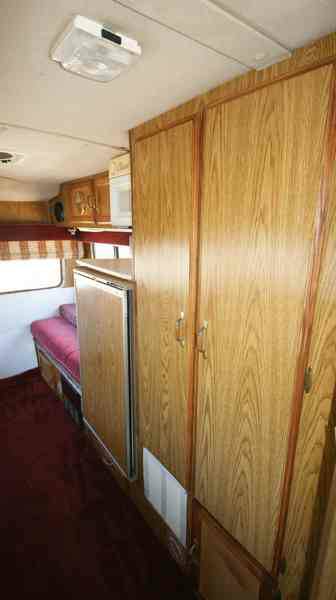


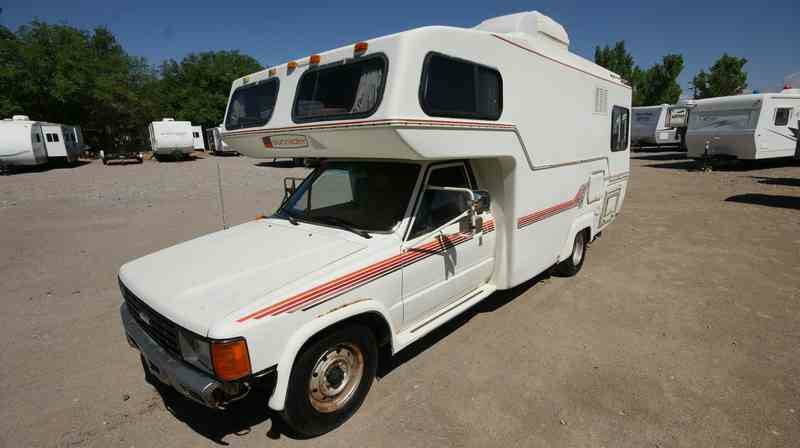







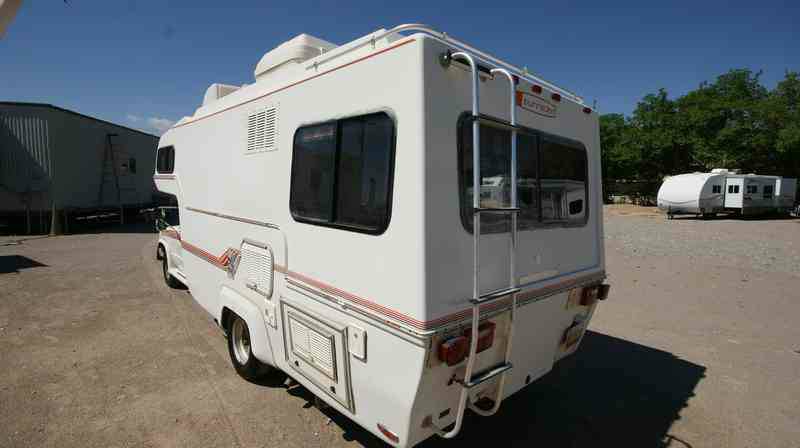

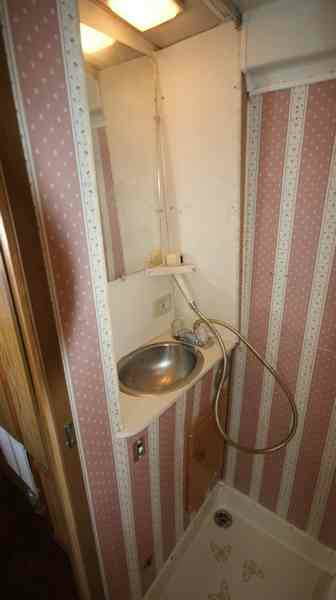






















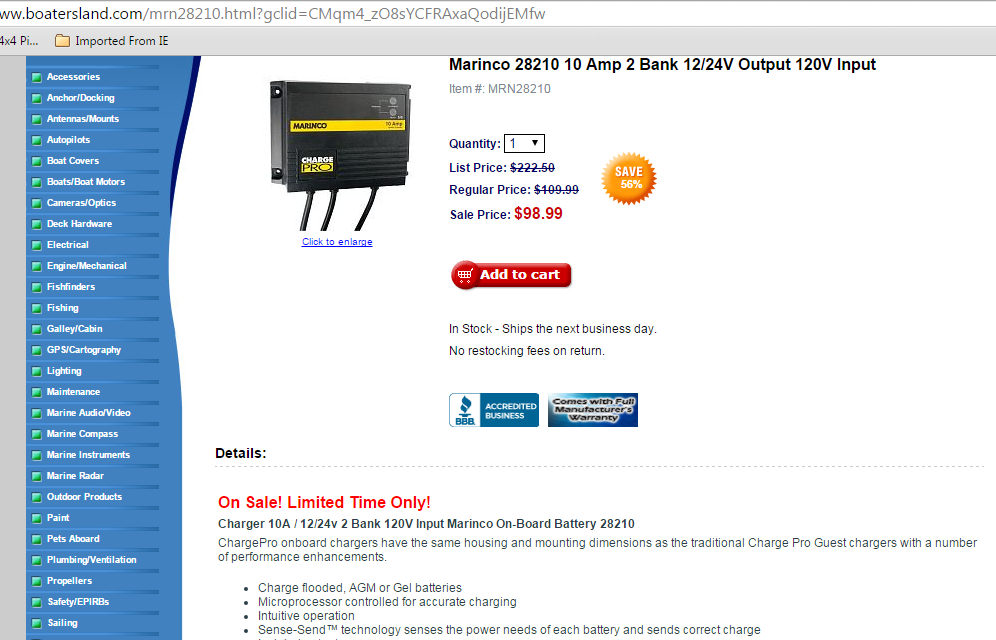





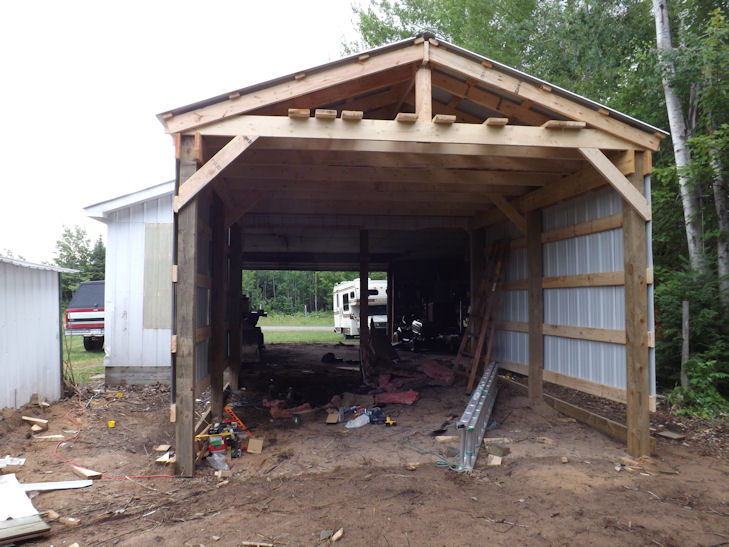



Looking for a Sunrader
in General Discussion
Posted
Yeah, I thought it looked awful big for an 18, but that's what the seller is calling it.